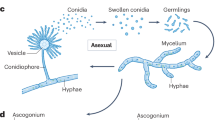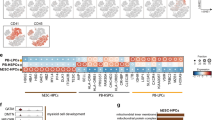Summary:
Hematopoietic stem cell (HSC) transplantation is the most frequent underlying predisposing condition to invasive aspergillosis. However, the significance of positive blood culture with Aspergillus sp in this particular population remains uncertain. We retrospectively reviewed all blood cultures performed in 1453 patients who received HSC transplant at our institution between 1980 and 2002. We identified 19 patients with positive blood cultures with Aspergillus sp. Only one of these patients had clinical, histologic or microbiologic evidence of invasive aspergillosis. Thus, even in a population at highest risk for invasive aspergillosis, positive blood cultures with Aspergillus sp remain unusual, and cannot be readily associated with invasive aspergillosis. A case by case assessment by treating physicians of the clinical and radiologic parameters should be systematically made to establish the significance of aspergillemia. Single bottle positivity, obtained with the lysis-centrifugation blood culture system, is a common indicator of pseudoaspergillemia.
This is a preview of subscription content, access via your institution
Access options
Subscribe to this journal
Receive 12 print issues and online access
$259.00 per year
only $21.58 per issue
Buy this article
- Purchase on SpringerLink
- Instant access to full article PDF
Prices may be subject to local taxes which are calculated during checkout
Similar content being viewed by others
References
Kontoyiannis DP, Sumoza D, Tarrand J et al Significance of aspergillemia in patients with cancer: a 10-year study. Clin Infect Dis 2000; 31: 188–189.
Girmenia C, Nucci M, Martino P . Clinical significance of Aspergillus fungaemia in patients with haematological malignancies and invasive aspergillosis. Br J Haematol 2001; 114: 93–98.
Patterson TF, Kirkpatrick WR, White M et al. Invasive aspergillosis. Disease spectrum, treatment practices, and outcomes. I3 Aspergillus Study Group. Medicine (Baltimore) 2000; 79: 250–260.
Duthie R, Denning DW . Aspergillus fungemia: report of two cases and review. Clin Infect Dis 1995; 20: 598–605.
Reimer LG, Wilson ML, Weinstein MP . Update on detection of bacteremia and fungemia. Clin Microbiol Rev 1997; 10: 444–465.
Madani TA, Kabani A, Hoban D et al. Value of routine procurement of Isolator in addition to BacT/Alert blood cultures in febrile neutropenic patients with acute myeloid leukemia. Can J Infect Dis 1998; 9: 287–293.
Vetter E, Torgerson C, Feuker A et al. Comparison of the BACTEC MYCO/F Lytic bottle to the isolator tube, BACTEC Plus Aerobic F/bottle, and BACTEC Anaerobic Lytic/10 bottle and comparison of the BACTEC Plus Aerobic F/bottle to the Isolator tube for recovery of bacteria, mycobacteria, and fungi from blood. J Clin Microbiol 2001; 39: 4380–4386.
Fuller DD, Davis Jr TE, Denys GA et al. Evaluation of BACTEC MYCO/F Lytic medium for recovery of mycobacteria, fungi, and bacteria from blood. J Clin Microbiol 2001; 39: 2933–2936.
Ziegler R, Johnscher I, Martus P et al. Controlled clinical laboratory comparison of two supplemented aerobic and anaerobic media used in automated blood culture systems to detect bloodstream infections. J Clin Microbiol 1998; 36: 657–661.
Hellinger WC, Cawley JJ, Alvarez S et al. Clinical comparison of the isolator and BacT/Alert aerobic blood culture systems. J Clin Microbiol 1995; 33: 1787–1790.
Lopes-Bezerra LM, Filler SG . Interactions of Aspergillus fumigatus with endothelial cells: internalization, injury and stimulation of tissue factor activity. Blood 2004; 103: 2143–2149.
Acknowledgements
We thank Catherine Guilbault and Michèle Joseph for their help in retrieving the patients’ data.
Author information
Authors and Affiliations
Corresponding author
Rights and permissions
About this article
Cite this article
Simoneau, E., Kelly, M., Labbe, A. et al. What is the clinical significance of positive blood cultures with Aspergillus sp in hematopoietic stem cell transplant recipients? A 23 year experience. Bone Marrow Transplant 35, 303–306 (2005). https://doi.org/10.1038/sj.bmt.1704793
Received:
Accepted:
Published:
Issue date:
DOI: https://doi.org/10.1038/sj.bmt.1704793
Keywords
This article is cited by
-
The Mycobiome in Health and Disease: Emerging Concepts, Methodologies and Challenges
Mycopathologia (2020)
-
How to interpret serum levels of beta-glucan for the diagnosis of invasive fungal infections in adult high-risk hematology patients: optimal cut-off levels and confounding factors
European Journal of Clinical Microbiology & Infectious Diseases (2015)
-
Genomics and Proteomics as Compared to Conventional Phenotypic Approaches for the Identification of the Agents of Invasive Fungal Infections
Current Fungal Infection Reports (2013)
-
Laboratory diagnostics of invasive fungal infections: an overview with emphasis on molecular approach
Folia Microbiologica (2012)
-
The mechanism for low yield of blood culture in invasive aspergillosis; the clinical importance of antigen detection tests revisited
Bone Marrow Transplantation (2005)



